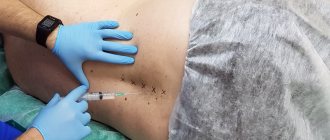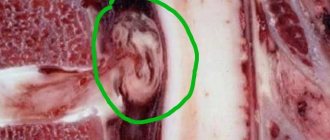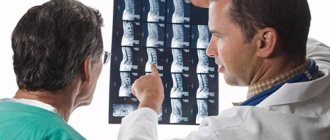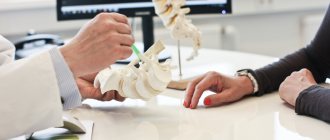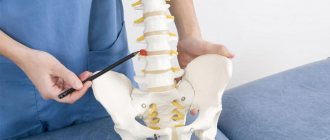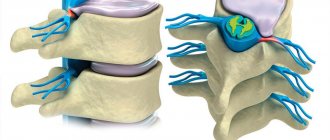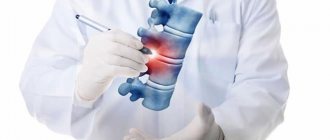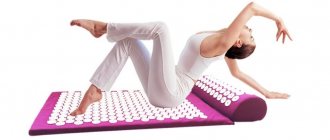Osteochondrosis is a common degenerative disease in which intervertebral discs are first deformed and then destroyed. The disease is accompanied by severe pathological symptoms - severe back pain, limited mobility. Hirudotherapy for spinal hernia helps relieve inflammatory complications, restore damaged tissue, and stop the progression of the disease. If treatment is started promptly, it is sometimes possible to completely restore the damaged disc.
What is hirudotherapy
Hirudotherapy is a procedure during which medicinal leeches are placed on the problem area. They pierce the skin and begin to suck blood, triggering processes that stimulate blood circulation, accelerating the healing of the hernia.
Leech saliva contains useful substances that:
- improve tissue regeneration;
- have an analgesic, anti-inflammatory effect;
- relieve swelling.
For hirudotherapy for a hernia, you cannot use a simple wild leech caught in a swamp. It can infect a person with dangerous bacteria, viruses, worms, and cause allergies. We need special medical leeches (hirudes), the saliva of which contains more than 100 enzymes and other useful biologically active substances.
It’s not enough to buy a medicinal leech. It must be stored correctly, and also know how to prepare them for the procedure, otherwise there will be no therapeutic effect. The hirudes used in the Paramita clinic meet all quality criteria:
- For the session, doctors take leeches that have been fasting for at least 3 months. During this time, the required amount of biologically active substances is collected in the saliva of the hiruda, which can be used in the treatment of hernia with leeches.
- Hyrudas are grown under artificial conditions in a special biofactory.
- Leeches in the clinic are stored in a glass container, which is 2/3 filled with water (boiled and mineral water cannot be used). The top of the jar is covered with cotton cloth and tied with an elastic band so that the leeches do not escape. The container is placed in a bright, well-ventilated place, out of direct sunlight. We do not keep leeches in the refrigerator, as this is prohibited. They become passive and have no effect.
We use leeches in the treatment of spinal hernia only once, after the session they are destroyed. This eliminates the possibility of transmitting the infection to another patient.
The healing properties of hirudotherapy
Leeches stimulate local blood flow, which activates the supply of nutrients to damaged tissues. In addition, general blood circulation starts, and with it the functioning of all organs and systems improves.
After a bite, the saliva of the worms enters the bloodstream, which has a noticeable lymphatic drainage effect, which helps remove waste, toxins from the body, and relieve swelling. The substances included in the secretion of leeches easily cope with pain and inflammation not only in the diseased area, but also in other parts of the body:
- Anticoagulants (hirudin)
- reduce blood clotting, which helps eliminate blood clots. Hirudin makes plasma thinner, which improves cellular nutrition of tissues. - Apyrase, viburnum
- dissolve blood clots that clog blood vessels, improving blood flow, reducing the risk of damage to veins and arteries. - Collagenase
- destroys pathological collagen without affecting the epithelium, adipose, and muscle tissue. It stimulates the synthesis of normal collagen, restoring damaged skin. - Vasolidators
- expand the lumen of blood vessels, stimulate leukocytes to an immune response. They are directed to the source of inflammation and neutralize pathological processes. - Anesthetic substances
– relieve pain. - Bdellins, eglins
– relieve inflammation, activate immune cells. - Type
III hyaluronidases are enzymes that break down acidic mucopolysaccharides (including hyaluronic acid), which reduces their viscosity. Thus, hyaluronidase improves tissue permeability to other salivary enzymes, enhancing their healing properties.
Hirudotherapy can have a reflex effect, since in response to a bite the immune system is activated and additional antibodies are sent to the site of inflammation, which help eliminate the source of pain during a spinal hernia and heal the tissue.
The saliva of a medicinal leech contains many enzymes and biologically active compounds that have a positive effect on the human body.
The essence of the technique
Hirudotherapy originated in the times of Ancient Greece. In those days, leeches lived everywhere; they constantly “attached” people. Doctors began to notice that where the leeches were located, healing occurred very quickly. Over time, the “hardworking” parasites began to be used to treat a number of diseases.
The main principle of the technique lies in the saliva of leeches and its effect on the body. Leech saliva contains more than a hundred biologically active substances and enzymes that have a very beneficial effect on all systems of the human body. During the procedure, a certain bloodletting also occurs, which has long been considered healing (the body, noticing the slightest loss of blood, begins to activate all its processes for recovery). Modern specialists place leeches on biological points (as in acupuncture), which further increases the effect of the procedure.
Hirudotherapy is used in cardiology, gynecology, proctology, pediatrics, dermatology and other areas. The use of leeches in cosmetology has become very fashionable. Large salons offer treatments for problematic facial skin, rejuvenation, and cleansing (leeches remove all imperfections and make the skin smooth).
For medical purposes, only specially grown “disposable” leeches are used. They are completely sterile and bred in laboratory conditions. This eliminates the possibility of contracting infections and diseases that are transmitted through blood. Medical leeches are used exclusively on one patient, after which they are placed in a flask and filled with a special solution for disposal.
Important!
You can undergo hirudotherapy only in trusted clinics or offices. You must be sure that the leeches are truly medicinal and not caught in the swamp. The doctor’s qualifications are also very important, because he creates an individual course of treatment. These rules will help you avoid serious consequences and health problems.
How does hirudotherapy help with a hernia?
A herniation develops when the nucleus located in the intervertebral disc breaks through the protective fibrous membrane. It comes out and compresses the nerves of the spinal cord. Pain occurs due to which a person cannot turn his neck, raise his arm or bend his lower back. The nature of the discomfort depends on the affected nerve. In addition, inflammatory processes and swelling develop, which worsen the situation.
Treatment of a spinal hernia with leeches has the following effect on the diseased area:
- Local blood flow is activated, which improves tissue nutrition and restoration of damaged cartilage.
- Thrombosis and congestion are eliminated.
- Tense muscles relax.
- Puffiness is relieved.
- Accelerates tissue healing.
- The destroyed disc particles are broken down thanks to the enzymes that make up the saliva.
Leech therapy during periods of intense pain can partially replace analgesics. However, it does not harm the digestive system, liver, or kidneys. Hirudas also help with hernia and chronic pain.
Each type of intervertebral hernia has serious complications, so you should not delay treatment.
See how easy it is to get rid of a hernia in 10 sessions
Action of leeches
In the case of osteochondrosis diseases, hirudotherapy is primarily valued for its relaxing effect. Increased blood circulation around the sore spot promotes rapid regeneration of intervertebral discs, strengthens the walls of blood vessels, and helps avoid thrombus formation.
Another valuable property of worm overlay is relaxation. Patients with osteochondrosis are permanently irritated due to severe pain in the spine, this is natural. During attacks, sleep patterns are completely disrupted, which in turn initiates other problems in the body. Leeches help restore relaxation and normalize well-being. Vasodilation relieves migraines and forms preventive protection against blood clots.
Contraindications for hirudotherapy
- Diseases that are accompanied by severe bleeding due to poor blood clotting (hemophilia)
- Hemolysis is increased destruction of red blood cells.
- Anemia.
- Exhaustion or weakening of the body.
- Allergy to enzymes that are present in the saliva of leeches.
- Tuberculosis.
- Oncology regardless of location.
- Acute phase of infectious diseases.
- Serious mental disorders.
- Dangerous cardiovascular pathologies (heart attack, brain infarction, heart failure).
- Low blood pressure.
- Pregnancy, lactation, menstruation.
Features of treatment of cervical disc herniation
Intervertebral (intervertebral) hernia of the cervical spine is accompanied by a violation of the outflow of venous blood and the formation of stagnation, increased intracranial pressure, and often blood pressure. Leeches stick to the affected areas, where the temperature is elevated, due to which the cervical region gets rid of stagnant blood. As a result, pain is relieved and swelling is reduced. At the same time, medicinal enzymes enter the body, have a resolving effect on the hernia, and accelerate biochemical restoration processes.
Side effects
The main side effect of hirudotherapy for hernia is an allergy to leech saliva. It manifests itself as itching, burning, and redness. An unpleasant but normal condition is a prefix reaction, which is manifested by severe itching, redness of the skin, swelling at the site of the bite, and swelling. This is not an allergy or an infection, but an immune reaction similar to a mosquito bite. Unpleasant symptoms disappear within 1-3 days after the first session. After repeated procedures, the symptoms will become weaker and then disappear.
The prefix reaction does not always appear. It is usually experienced by older people and those suffering from obesity. In children it is minimal or does not occur at all.
Other complications appear only when leeches are applied incorrectly. For example, if the bite turns out to be unsterile (the leech has recently fed, the doctor worked without gloves), a dangerous infection can be transmitted through the blood. In the fight against the bacterium, the lymph nodes may enlarge, your health may worsen, and your fever may rise. You can avoid such effects if you do the procedure in our clinic.
Reviews
An analysis of reviews from people who have tried the effects of medicinal leeches allows us to conclude that this method of therapy is one of the most effective . Even those patients who were never specifically interested in it and used it because of acute health problems believed in its effect after the very first sessions, after they felt positive changes in their health. For some people, simultaneously with hirudotherapy, the doctor prescribed courses of physical therapy and physiotherapy , a complex of which helped them literally get back on their feet and return to normal life.
Hirudotherapy technique
A course of treatment with leeches can only be taken by experienced specialists.
Before we begin treating a hernia with leeches, we carefully examine the patient to determine the cause of the pain, the location of the disc damage, and the presence of contraindications to hirudotherapy. To do this we assign:
- X-ray of the spine.
- Ultrasound of soft tissues of the back.
- CT, MRI (if necessary).
- Blood tests. A test to determine blood clotting is required.
- Urine studies.
If there are no contraindications, the doctor draws up a detailed treatment regimen, which includes hirudotherapy. At the same time, he proceeds from the norms recommended regarding the maximum number of worms to be applied:
- 1 leech sucks up to 15 ml of blood.
- The same amount of plasma comes out after removing the worm.
- You cannot apply more than 7 hirudas in one session, the average number is five.
- The number of hirudes and the duration of the procedure depend on the complexity of the case and the severity of symptoms.
- The standard course of treatment is 8-10 sessions.
- The break between procedures is 3-4 days.
The session takes place in a specially equipped room, with strict adherence to sanitary and hygienic standards. The doctor wears gloves to avoid an accidental leech bite.
The doctor places hirudas on biologically active points that are located along the spinal column and other places. The worm itself chooses the site of the bite, which is usually an inflamed area where there is a lot of stagnant blood that is tasty for it. Giruda remains on the skin until it eats up and falls off on its own.
During the session, the doctor makes sure that the worm does not stick to the place where leeches cannot be placed:
- in places where veins and arteries accumulate;
- in areas where blood vessels are close to the surface of the skin;
- in areas where the skin is too rough and thick.
What types of intervertebral hernias are most difficult to treat?
4 stages of treatment for intervertebral hernia
Preparing the patient for the session
Leeches are very finicky creatures that cannot tolerate strong odors. They will not drink blood if you drank alcohol or smoked the day before, so you need to prepare for the session.
2-3 days before the session, give up alcohol and keep smoking to a minimum. Pay attention to your diet. Before hirudotherapy, do not eat smoked meats, garlic, or onions. On the day of the procedure, do not wear cologne or perfume. The skin should be clean; when showering, use unscented soap.
Where are leeches placed for a lumbar hernia?
Before placing leeches, the doctor determines where the hernia appeared, what complications it caused, and its causes. To do this, he uses the palpation method, X-ray data, ultrasound, blood tests, and urine tests.
Leeches for a lumbar hernia are often placed not only on the lower back, but also on the stomach - the left inguinal area, where the sigmoid colon is located. When inflamed, it releases toxins that enter the lower back, impairing blood circulation, especially near the sacrococcygeal vertebrae. This leads to the development of disc deformation, protrusion, and hernia.
Hirudotherapy for hernia of the lumbar spine is carried out according to different schemes. One of them is like this:
- Using palpation, the doctor finds a pain point on the left side of the abdomen, where he places 1-2 leeches. Then they themselves look for the source of inflammation and pierce the skin above it.
- Then the leeches are placed on the right side.
- The patient turns on his side, the doctor looks for a pain point in the lower back and below. When he finds it, he places the leech 3-4 cm from the vertebra.
This method helps to get rid of pain faster than if you place hirudas only on the lower back. The doctor can also place leeches on the neck and other parts of the back. The saliva of hirudas has a complex healing effect on the body and helps eliminate the cause that provoked disc deformation and hernia.
Read more about lumbar disc herniation in this article.
Placement of leeches for lumbar hernia
Where are leeches placed for a thoracic hernia?
Placing leeches for a thoracic hernia requires special qualifications. The heart is located nearby, so they cannot be used after a recent heart attack or other myocardial problems at the acute stage.
If everything is normal, the doctor places leeches on points along the spine, as well as on the chest, above the projection of the damaged disc. If the pain radiates to other parts of the body, the doctor looks for inflamed areas and applies worms to them. These are mainly the shoulder blades, shoulders, upper or lower abdomen. Hirudas help normalize the functioning of internal organs that have caused degeneration of the thoracic intervertebral disc.
Where are leeches placed for a cervical hernia?
If the cervical discs are damaged, the doctor places leeches in the neck and shoulder blades. Worms quickly find inflamed areas and stick to them. If you treat pain that radiates to the lower back and legs, the doctor can place worms along the entire spine.
What does it feel like?
When a leech pierces the skin, according to patients, unpleasant sensations often appear. They last literally a few seconds, since the worm’s saliva contains painkillers. During sucking, blood circulation starts. The patient may feel warmth and a slight tingling sensation.
After removing the leeches, a feeling of tightness appears, which is a normal reaction to wound healing. A bruise and swelling may appear, which will disappear within 1-2 days from the moment of the bite. A small scar remains, which will disappear within 1-2 months.
After the first procedure, pain in the spine decreases, inflammation disappears, and blood flow improves. My health improves dramatically and my mobility returns. Repeated sessions consolidate the result and neutralize the processes that caused disk damage.
In addition to eliminating pain and inflammation from a hernia, patients mention the following effects after undergoing a course of hirudotherapy:
- normalization of pressure;
- elimination of headaches, migraines;
- disappearance of tingling, numbness in the limbs;
- improvement of physical activity, quality of life.
What feelings shouldn't exist?
It is necessary to stop the procedure if there is a strong fever, fever, or rash. According to doctors, this may be the result of a severe allergic reaction. You should also stop the session if your blood pressure drops, dizziness, pale skin, or faintness appear.
How to remove leeches
The sucking process lasts from 10 to 60 minutes, after which the hirudes fall off on their own. You can’t forcefully remove them, as they may regurgitate the skin back into the wound. If the leech needs to be removed earlier, we use medical alcohol or iodine. Hyrudas do not like strong odors, and will fall off even if you just bring liquid to them.
Most often, leeches disappear on their own
Post-leech bleeding
During 1 procedure, one leech drinks from 3 to 10 mm of blood, a group - from 50 to 700 mm. To do this, she pierces the skin to a depth of 1.5 mm and injects saliva, which contains substances that prevent blood clotting.
When the leech falls off, slight bleeding occurs, and the remaining intercellular fluid and lymph come out along with the plasma. Depending on the organism, the blood clots within 3-24 hours after the leech falls off. After the procedure, wounds cannot be treated; you need to apply a high-quality bandage.
Features of treatment of lumbar disc hernia
Intervertebral hernia of the lumbosacral spine is the most common form of the disease. During the procedure, leeches are placed parallel to the spine at a distance of 3-5 cm from the center line. They are tightly suctioned to the skin and left until completely saturated. Used leeches are disposed of.
This method can effectively relieve swelling and eliminate pain, improve microcirculation in tissues and stimulate regeneration processes. Hirudotherapy significantly alleviates the condition of a patient with a hernia of the lumbar spine in several directions at once:
— Elimination of blood clots, — Relief of spasms, — Anti-inflammatory effects, — Improvement of blood flow — Activation of the immune system.
Hirudotherapy at the Paramita clinic
Leech therapy is an effective technique when used as part of complex therapy. It helps cure a hernia at the initial stage of the disease. In advanced cases, the procedure cannot completely replace drug therapy or surgery, but it enhances the effect of medications and helps reduce their dosages. After surgery, leeches accelerate tissue healing, relieve swelling and pain.
If you have a herniated disc, contact our Paramita clinic in Moscow. We employ highly qualified doctors with extensive experience and many positive reviews. Before drawing up a treatment regimen, the patient undergoes a thorough examination. It determines not only the location of the pain, but also the causes of the herniated disc, which helps eliminate them.
Based on the tests, the doctor draws up an individual leech treatment plan. It states:
- number of procedures;
- how often should it be carried out?
- maximum number of leeches for each session;
- where and how to place leeches.
Our doctors have extensive experience in treating hernias with leeches, so it is absolutely safe.
In addition to hirudotherapy, we use other methods of Western and Eastern medicine to treat hernia. Among them are acupuncture, manual therapy, massage, blockade, kinesiotaping. The combination of these techniques allows you to quickly eliminate pain, inflammation, prevent relapses, improve your health and overall well-being!
We use non-surgical hernia treatment techniques
Read more about our unique technique
Contraindications to the procedure
It is forbidden to use leeches for those patients who are undergoing an intensive course of medications with a cumulative effect. In some cases, patients experience allergic reactions to saliva components injected into the blood by a leech. Despite all the severity and load on the spine, hirudotherapy is contraindicated for pregnant and lactating women. Application is permitted only for adult patients. Naturally, it is strictly forbidden to administer leeches to people who have problems with hematopoiesis, blood clotting, and all related diagnoses.
FAQ
Can hirudotherapy be used to treat children?
It is possible if the procedure is performed by an experienced pediatrician who takes into account children’s impressionability and fear of worms. The treatment regimen is the same as for adults, but fewer leeches should be used: newborn babies - no more than 1 leech, children under 14 years old - no more than 3 pieces per session, after 14 years old - as in adults.
Is it possible to combine treatment of a hernia with leeches with other procedures: acupuncture, massage, paraffin baths?
It is possible, but all procedures must be prescribed by a doctor, since incorrect combination can cause complications. Our physician will create a treatment regimen so that these procedures enhance each other’s effect.
Is it possible to perform hirudotherapy at home?
No. The session must be carried out only in the clinic. Not only do experienced doctors work here who know how to place leeches and where they should not be placed. The hospital has the ability to provide the correct storage conditions for medicinal leeches.
Literature:
- Savinov V. A. Hirudotherapy.— Medicine;
- Kostikova L. I. Hirudotherapy. Treatment of complex chronic and advanced diseases;
- Kamenev, O. Yu. A leech will help you: A practical guide to hirudotherapy
Themes
Intervertebral hernia, Spine, Pain, Treatment without surgery Date of publication: 03.03.2021 Date of update: 16.03.2021
Reader rating
Rating: 5 / 5 (1)
